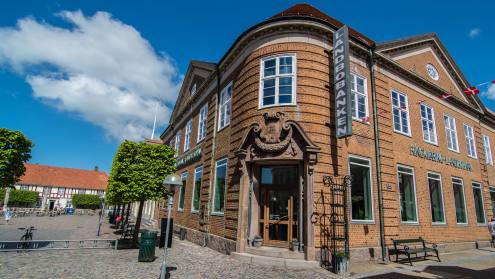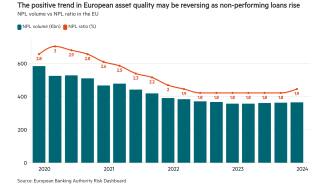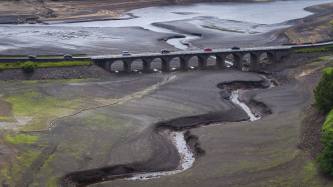When thinking about Iceland, a few things probably spring to mind: banking collapses, volcanic eruptions, glaciers, hot springs and fishing. But there is more to this small island economy, nestled between Norway, the UK and Greenland, than meets the eye.
While fishing has been the mainstay of Iceland’s economy for centuries, accounting for approximately 39% of the value of exported goods in 2021, according to Statistics Iceland, Icelanders talk about three main economic pillars: fishing, aluminium and tourism.
“During the banking crisis in 2008, the economy was in dire straits and the weak Icelandic krona gave us a competitive advantage in terms of tourism,” explains Magnus Arni Skulason, founder and managing director at Reykjavik Economics. “The sector has been booming since 2014.”
According to the Organisation for Economic Co-operation and Development (OECD), tourism contributes approximately 40% of Iceland’s export revenues and makes up around 10% of its gross domestic product (GDP). Many attribute the country’s remarkable economic recovery in the wake of the 2008 financial crisis and the collapse of its banking system — which sent its economy and currency into freefall — to its strong tourism sector.
But its reliance on tourism has also made Iceland’s economy more vulnerable to economic shocks. In 2020, during the Covid-19 pandemic when tourism fell off a cliff, Iceland was left with a gaping hole in its finances. With only a quarter of foreigners arriving in 2020 compared to the previous year, GDP declined by 6.6% and unemployment rose to 8%, according to the OECD.
“The pandemic placed a huge burden on the public finances,” says Michele Napolitano, senior director and head of western European sovereign ratings at Fitch. “But Iceland weathered the pandemic better than we expected. It entered the pandemic with its public finances in good shape, so it had quite a lot of fiscal room to spend on supporting businesses in the tourism and hospitality sectors.”
Mr Napolitano says Iceland never endured a European-style lockdown and managed to keep its economy open. “Domestic demand did relatively well — better than in other countries,” he explains. “When restrictions were lifted, tourism bounced back quickly and much stronger than expected.” According to data published by Íslandsbanki, around 1.6 million tourists were predicted to visit Iceland in 2022, with June seeing the highest number of tourist arrivals to Iceland since autumn 2019.
When restrictions were lifted, tourism bounced back quickly and much stronger than expected
With tourism rebounding, strong domestic demand and solid export growth, real GDP grew 6.5% year-on-year in the second quarter of 2022, according to Fitch. With net general government debt at 60% of GDP, international reserves at 29% of GDP and a sound banking system, a June 2022 International Monetary Fund (IMF) Executive Assessment concluded that Iceland’s economy remains well positioned to handle potential negative shocks, including from the impact of the war in Ukraine.
Over the medium term, the IMF expects export-oriented industries, such as fishing and aluminium, to be the main source of growth for Iceland’s economy, while private consumption is expected to moderate with the tightening of monetary and fiscal policies.
Rising inflation
Since May 2021, Iceland’s central bank has instituted a series of aggressive rate hikes — 75 to 100 basis points (bps) — to try and cool consumer demand. At its last meeting, in November, the Central Bank of Iceland hiked rates by another 25bps, raising the key policy rate to 6%. Mr Napolitano says Iceland’s central bank started hiking rates even when the IMF advised against it. “There was still this idea that inflation was transitory. But Iceland’s central bank got inflation right from the start,” he says.
Early action by the central bank appears to have paid off, with inflation falling from 9.9% in July to 9.3% in September, coming in lower than earlier predictions by the central bank that it would peak at 11% by year-end. But Iceland is not out of the woods yet when it comes to inflation, says Mr Napolitano.
With 90% of its households using geothermal energy to heat their homes, Iceland’s economy has been shielded from spiralling energy prices due to the war in Ukraine. But as disposable incomes did not suffer that much during the pandemic and the tourism sector has done particularly well, Mr Napolitano says there is quite strong domestic demand which is fuelling inflation.
Iceland has seen some of the biggest increases in housing prices among the OECD countries. Property prices soared in nominal terms by 24.07% year-on-year in the third quarter of 2022. “The central bank is trying to stabilise the market through rate hikes which have increased payments on new mortgages by over €1000 a year, according to a study by the Central Bank of Iceland,” says Mr Skulason. “That has mainly affected demand from first-time buyers. But interest rate hikes don’t affect households straight away.”
The central bank also lowered the maximum loan-to-value ratio for first-time buyers from 90% to 85% of the market value of a property. But these affordability measures also put strains on the rental market, according to Mr Skulason. “If you can’t afford to buy, you have to live somewhere,” he adds.
As one of the most highly unionised countries in the OECD, wage bargaining in Iceland also has a major impact on the economy and inflation. In its June 2022 assessment, the IMF warned that a potential impasse in negotiations for a new collective bargaining agreement could result in “labour market tensions and economic dislocation”.
“The labour market is tight, which is one of the main risks moving forward,” says Ásgeir Jónsson, Iceland’s central bank governor. “Nevertheless, we have been able to reach a short-term 14-month contract with the major unions. That will give the central bank some time showing results in bringing inflation down, and thus we will be able to cement long-term price stability moving forward.”
Headwinds on the horizon
The past 12 months were definitely stellar for Iceland’s economy, but 2023 could see some economic headwinds blowing Iceland’s way as growth in its trading partners stalls. Fitch Ratings predicts that GDP growth could slow sharply to 1.9% in 2023, due to weaker growth in trading partners (particularly the UK and EU), which is expected to result in weaker tourism flows and tighter monetary policy.
While Iceland’s fishing exports benefited from higher prices in 2022, this year could see much lower demand from Europe and prices coming down, says Mr Napolitano. Aluminium prices could also fall. But even with GDP growth of around 2%, he says Iceland could still be one of the fastest growing economies in Europe.
The EU makes up approximately 55% of Iceland’s total trade in goods, followed by the US at 8%, the UK at 7.3%, and Norway at 6.9%, according to EU Commission data. But Mr Jónsson is particularly concerned about the impact a weakening UK economy and currency could have on Iceland.
“The UK is an important market for our goods and for financial transactions,” he explains. “Iceland has benefited from London’s standing as the financial capital of Europe as well as the whole of Scandinavia, although of course there have been ups and downs in the long-standing relationship between Iceland and the City [of London]. Thus, we’re worried the UK could lose its status as a major financial centre.”
Diversification and innovation
To avoid the boom-and-bust cycle of its economy, which is susceptible to shocks in any of the three sectors it relies so heavily on, Iceland has made concerted efforts recently to try diversifying its economy. “Covid-19 was a blessing in disguise for us,” says Mr Jónsson. “There was a large contraction in the tourism sector, which shed labour to other sectors and led to investment in other areas.”
Healthcare, pharmaceutical aquaculture, computer gaming and data storage have emerged to form what Mr Skulason calls the fourth pillar of Iceland’s economy: innovation. “Funding for enterprises via venture capital funds, supported by government tax credits on research and development, have benefited businesses such as pharmaceuticals, gaming software and fintech,” he says.
Inspired by traditional industries such as fishing, Mr Skulason says Icelandic start-ups like Kerecis are using cod skin to heal wounds. Others, like Controlant, have developed technology to monitor the temperatures of Covid-19 vaccines; and sleep diagnostics company, Nox Health, which has operations in Reykjavík, is on a mission to help the world sleep better.
Iceland is also becoming a major centre for aquaculture, with investments in on-land salmon farming powered by hydrothermal energy.
Although these emerging sectors are still relatively small, according to the OECD’s Ecoscope blog, “some have started to draw level with tourism as growth engines for Iceland — including the pharmaceutical industry, which continues to develop rapidly — as well as data processing and storage, which benefit from Iceland’s low energy prices, and cool and windy climate”.
The country has a young, well-educated population which, according to Mr Skulason, is the growth engine for the future. “I’m excited to see how these young people build up Iceland,” he says.













